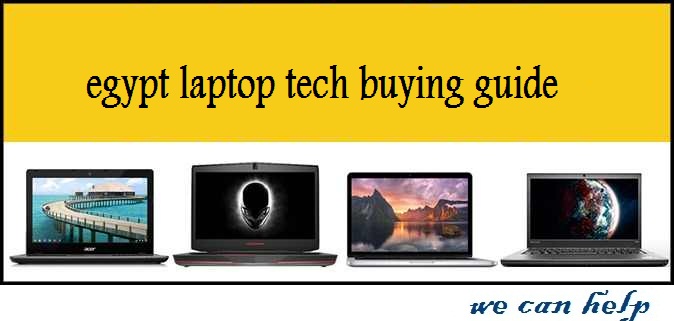
You might take your smartphone everywhere and use your tablet while lying in bed, but when it’s time to do serious work or have serious fun, you’ll need a laptop. Laptops offer physical keyboards for faster typing; they’re better at multitasking, and they offer a lot more power for everything from editing video and creating PowerPoint presentations to playing the latest games. So what type of laptop should you get?
There are a wide variety of sizes, features and prices, which makes choosing the right laptop a challenge. That’s why you need to figure out your needs. To make the right call, just follow these tips.
1. What are you going to do with it?

All-Purpose: If you want to do a little bit of everything or plan to share your laptop amongst family members, you can consider anything from an inexpensive 15-incher that mostly stays in your living room to a lightweight 11- or 13-inch system you carry around the house. Depending on how much gaming and graphics work you want to do, expect to spend between 2800 le and 5000 le
 Business/Productivity: Whether you’re a traveling executive or a student, your main goal is writing and editing text, manipulating spreadsheets and creating presentations. So you’ll want a laptop with a good keyboard, durable design and sharp screen.
Business/Productivity: Whether you’re a traveling executive or a student, your main goal is writing and editing text, manipulating spreadsheets and creating presentations. So you’ll want a laptop with a good keyboard, durable design and sharp screen.
 Gaming: If you play high-end games, go for a laptop with an equally high-end Core i7 processor, top-of-the-line discrete graphics (perhaps even dual cards), a high-res screen and strong speakers. For the best performance, expect to spend well over $1,000.
Gaming: If you play high-end games, go for a laptop with an equally high-end Core i7 processor, top-of-the-line discrete graphics (perhaps even dual cards), a high-res screen and strong speakers. For the best performance, expect to spend well over $1,000.
 Creative Professional: If you edit video, photos or illustrations for a living, you need a laptop with a powerful processor, discrete graphics, a Solid State Drive (SSD) and a large and high-res display (full HD or higher). Expect to spend over $1,000.
Creative Professional: If you edit video, photos or illustrations for a living, you need a laptop with a powerful processor, discrete graphics, a Solid State Drive (SSD) and a large and high-res display (full HD or higher). Expect to spend over $1,000.
 Light Surfing/Email/Second Computer: If you plan to give your laptop to the kids or use it as an adjunct to your main PC, you can go with a low-cost laptop or a Chromebook that runs Google’s browser-centric OS.
Light Surfing/Email/Second Computer: If you plan to give your laptop to the kids or use it as an adjunct to your main PC, you can go with a low-cost laptop or a Chromebook that runs Google’s browser-centric OS.
2. Choose the Right Size

You have to figure out just how portable you need your laptop to be. Laptops are usually categorized by their display sizes:
11 to 12 inches: The thinnest and lightest systems around have 11- to 12-inch screens and typically weigh less than 3 pounds. (Many Chromebooks come in this size.) However, the screen and keyboard may be cramped for some users.
13 to 14 inches: This size provides the best balance of portability and usability. Laptops with 13- or 14-inch screens usually weigh between 3 and 4 pounds and fit easily on your lap while still providing generously sized keyboards and screens.
15 inches: The most popular size, 15-inch laptops are usually the most affordable and typically weigh 5 to 6 pounds. If you’re not planning to carry your notebook around very frequently, then a 15-inch system could be a good deal for you. Some 15-inch models have DVD drives, but you’ll save weight if you skip it.
17 to 18 inches: If you prefer the biggest screen possible, a 17- or 18-inch system could provide the kind of processing power you need in order to play high-end games or reach workstation-level productivity. Because of their girth, laptops this size can pack high-voltage quad-core CPUs, powerful discrete graphics and multiple storage drives. Just don’t expect to carry around these 7-pound-plus systems often.
3. Check That Keyboard and Touchpad

The most impressive specs in the world don’t mean diddly if the laptop you’re considering has bad ergonomics. Ask yourself a few questions to test this important quality: Does the keyboard have solid tactile feedback and enough space between the keys? Is the touchpad smooth to operate, or is it jumpy? Do the mouse buttons have a satisfying click, or do they feel mushy? How well do multitouch gestures work? Can you zoom in and out with ease, and select text using the touchpad without the cursor skipping around?
If you’re shopping for a Windows 8.1 notebook, test the touchpad to make sure that gestures work well. In general, Apple and Lenovo offer the best keyboards and touchpads.
MORE: 12 Dumbest PC Default Settings (and How to Change Them)
4. Know Your Specs

Notebook specs such as CPU, hard drive, RAM and graphics chip can confuse even notebook aficionados, so don’t feel bad if spec sheets look like alphabet soup to you. What you need really depends on what you plan to do with your laptop. More-intensive tasks such as 3D gaming and HD video-editing require more-expensive components.
Here are the main components to keep an eye on.
CPU: The least expensive laptops on the market have AMD E Series or Intel Pentium/Celeron CPUs, which will struggle to handle serious productivity, gaming or media tasks, but can handle Web surfing, email and social networks use. If you’re buying a system with an Intel Core series processor, make sure you get a 4th generation Core or “Haswell” for the best combo of performance and battery life. You know you’re getting Haswell if the model number begins with a 4 (ex: Intel Core i5-4200U).
Unless you’re buying a secondary computer, don’t settle for less than an Intel Core i3 CPU or AMD A Series. If you’re spending more than $500, demand at least an Intel Core i5 CPU, which is capable of increasing its clock speed dynamically when you need more performance. Power users and gamers should settle for no less than a Core i7 system, preferably a quad-core chip.
RAM: When it comes to memory, or RAM, even the cheapest notebooks have 4GB these days, so don’t settle for less. If you can get a system with 8GB, you’ll be better prepared for high-end applications and lots of multitasking.
Hard Drive/SSD: For most users, a fast drive is more important than a large one. If you have a choice, go with a Solid State Drive (SSD) over a hard drive, because SSDs provide twice to three times the speed of their mechanical counterparts. However, SSDs are usually more expensive and come in much lower 128/256GB capacities.
If you can’t afford an SSD or if you need more capacity, go for a 7,200-rpm hard drive over a 5,400-rpm unit. Even if you have several movies and games on your hard drive, a 320GB should provide more than enough space, but 500GB or 750GB drives usually don’t cost much more.
MORE: 15 Ways to Speed Up Your Boot and Shutdown Times
Flash Cache: Some Ultrabooks and some other notebooks come with 8, 16 or 32GB flash caches that can increase performance when paired with a traditional hard drive. While it won’t make your computer as fast as an SSD would, a flash cache will help boost load and boot times while allowing you to store all your data on a large hard drive.
Display: The more pixels you have, the more content you can fit on screen, and the sharper it will look. Most budget and mainstream notebooks come with 1366 x 768-pixel resolutions. However, if you have the option, choose a laptop with a higher pixel count — 1600 x 900, 1920 x 1080 or even higher. Always go for the highest res you can get. You’ll see more of your favorite Web pages, multitask better and have an improved movie-watching experience. Full HD panels (1920 x 1080) cost about $150 more than your typical display, but are worth the splurge, especially on larger screens.
Touch Screen: Windows 8 is simply more fun and immersive with a touch screen, but if your laptop is not a hybrid with a bendable or rotatable screen, you can probably live without it. Though you can get a touch-screen system for under $500 these days, the difference in price between similarly configured systems with and without touch is $100 to $150. Touch screens also add weight and make the machine consume more power than non-touch counterparts.
Graphics Chip: For the most part, an integrated graphics chip (one that shares system memory) will be fine for basic tasks, including surfing the Web, watching video and even playing some mainstream games. But a discrete graphics processor from AMD or Nvidia makes a huge difference when you’re playing the most-demanding games. Such a processor will have dedicated video memory. Plus, a good GPU can accelerate video playback on sites such as Hulu, while also speeding up video editing.
As with CPUs, there are both high- and low-end graphics chips. Nvidia maintains a list of its graphics chips from low to high end, as does AMD. In general, workstations and gaming notebooks will have the best GPUs, including dual graphics on the most expensive systems.
DVD/Blu-ray Drives: Fewer and fewer laptops these days come with optical drives. That’s because you can download most software, and download or stream video from the Web. Unless you burn discs or want to watch Blu-ray movies, you don’t need one of these drives and can save as much as half a pound of weight by avoiding them.
MORE: Intel Haswell Launched: 5 Things You Need to Know
5. 2-in-1 (Hybrid) or Traditional Notebook?
 Since the launch of Windows 8, we’ve seen a number of hybrid laptop designs that double as tablets. These include the Lenovo IdeaPad Yoga, which has a screen that bends back 360 degrees to turn into a slate, tablets that pop off of their keyboards, and notebooks with slide-out keyboards.
Since the launch of Windows 8, we’ve seen a number of hybrid laptop designs that double as tablets. These include the Lenovo IdeaPad Yoga, which has a screen that bends back 360 degrees to turn into a slate, tablets that pop off of their keyboards, and notebooks with slide-out keyboards.
In most cases, these devices don’t provide a slate experience that rivals dedicated tablets or a notebook experience that competes with clamshell-only devices. If you like the idea of occasionally using your laptop in slate mode, a convertible like the Lenovo IdeaPad Yoga is a versatile choice. But if you want the flexibility of using your device as standalone tablet, a detachable design is best.
MORE: Top 8 Windows Tablet-Laptop Hybrids
6. Don’t Skimp on Battery Life

Nobody wants to be chained to a power outlet, even if there’s a socket within reach. If you’re buying a 15-inch notebook, look for at least 4 hours of endurance. Those who plan to be fairly mobile should shop for notebooks that offer more than 6 hours of battery life, with 7-plus hours being ideal. The longest-lasting laptops in the business (ex: The ThinkPad X240) can last for 10 to 20 hours.
To determine a notebook’s expected battery life, read third-party results from objective sources — LAPTOP notebook reviews, for example — rather than taking the manufacturer’s word for it. Your actual battery life will vary depending on your screen brightness and what tasks you perform (video eats more juice than Web surfing).
If given the choice, pay extra for an extended battery; you won’t regret it. Keep in mind that some notebooks (such as the MacBook Air) feature sealed batteries that you can’t easily upgrade yourself.
MORE: 10 Laptops with the Longest Battery Life
7. How Much Can You Get for Your Money?

These days, you can buy a usable laptop for under $500, but if you can budget more, you’ll get a system with better build quality, longer battery life, a sharper screen and stronger performance. Here’s what you can get for each price point.
$400 to $600: For well under $600, you can get a notebook with an Intel Core i5 or AMD A8 CPU, 4 to 8GB of RAM, and a 500GB hard drive, all respectable specs.
$600 to $800: As you get above $600, you’ll see more premium-designs, such as metal finishes. Manufacturers also add in other features as you climb the price ladder, including better audio and backlit keyboards. You may also be able to get a flash cache and a screen with a resolution of 1600 x 900 or higher.
Above $800: At this price range, expect notebooks that are more portable, more powerful or both. Expect higher-resolution screens, faster processors and possibly discrete graphics. The lightest, longest-lasting ultraportables, like the MacBook Air and Lenovo ThinkPad X1 Carbon, tend to cost more than $1,000. High-end gaming systems and mobile workstations usually cost upward of $1,500, even as much as $2,500 or $3,000.
MORE: Top 6 Laptops Under $500
8. The Brand Matters
Your laptop is only as good as the company that stands behind it. Accurate and timely technical support is paramount, which is why LAPTOP evaluates every major brand in our annual Tech Support Showdown. This past year, Sony came in first place, followed by Appleand Samsung.
Support is only part of what makes a notebook brand worth your money. You also have to consider how the manufacturer stacks up to the competition in terms of design, value and selection, review performance and other criteria. In our 2014 Best and Worst Laptop Brandsreport, Apple placed first, followed by Lenovo and ASUS.
9. Mac, Chrome OS or Windows?

This is not an easy question to answer, especially if you’ve never considered making the switch from Windows to Mac or if you’ve never heard of Chrome OS. But this quick overview of each platform’s strengths and weaknesses should help.
Windows 8
Windows notebooks are generally more affordable than Macs (with Windows machines starting under $400). They also offer a much wider range of design choices, from more than a dozen major vendors. Unlike Apple, Microsoft and its partners allow users to buy notebooks with touch screens, as well as convertible designs that let you easily transform from notebook to tablet mode.
The new Windows OS has replaced the Start menu with a tile-based start screen and a raft of full-screen, touch-friendly apps. However, Windows 8.1 still has a desktop mode for running all your existing apps. The biggest improvements in Windows 8.1 are the enhanced search features and the easier multitasking offered by Modern apps. A handful of vendors still offer Windows 7 as an option if you custom configure your notebook online.
In general, Windows notebooks provide more business-friendly features, such as biometric and Smart Card verification and Intel vPro systems management.
MORE: Top 10 Ultrabooks
Google Chrome OS
If surfing the Web, social networking and email are your priorities, buying a Chromebook could be a solid choice. Google’s Chrome OS provides a version of the company’s Chrome browser in an online-centric environment filled with Web apps. You can buy an 11-inch Chromebook for as little as $199. Just keep in mind that Chromebooks have limited offline capabilities.
Apple OS Mavericks
Apple’s MacBook Air and MacBook Pro notebooks offer an easy-to-use operating system in OS X Mavericks. There’s an iOS-like Launchpad for your apps, as well as interactive Notifications and Finder Tabs for improved multitasking. We also like the improved multiple monitor support.
MacBook Air and MacBook Pro notebooks also tend to outclass most Windows machines when it comes to industrial design, the touchpad and display quality. While Windows PCs offer more software choices, with the Mac App Store, Apple makes it easier to find and install programs. However, Apple’s notebooks start at $999.






